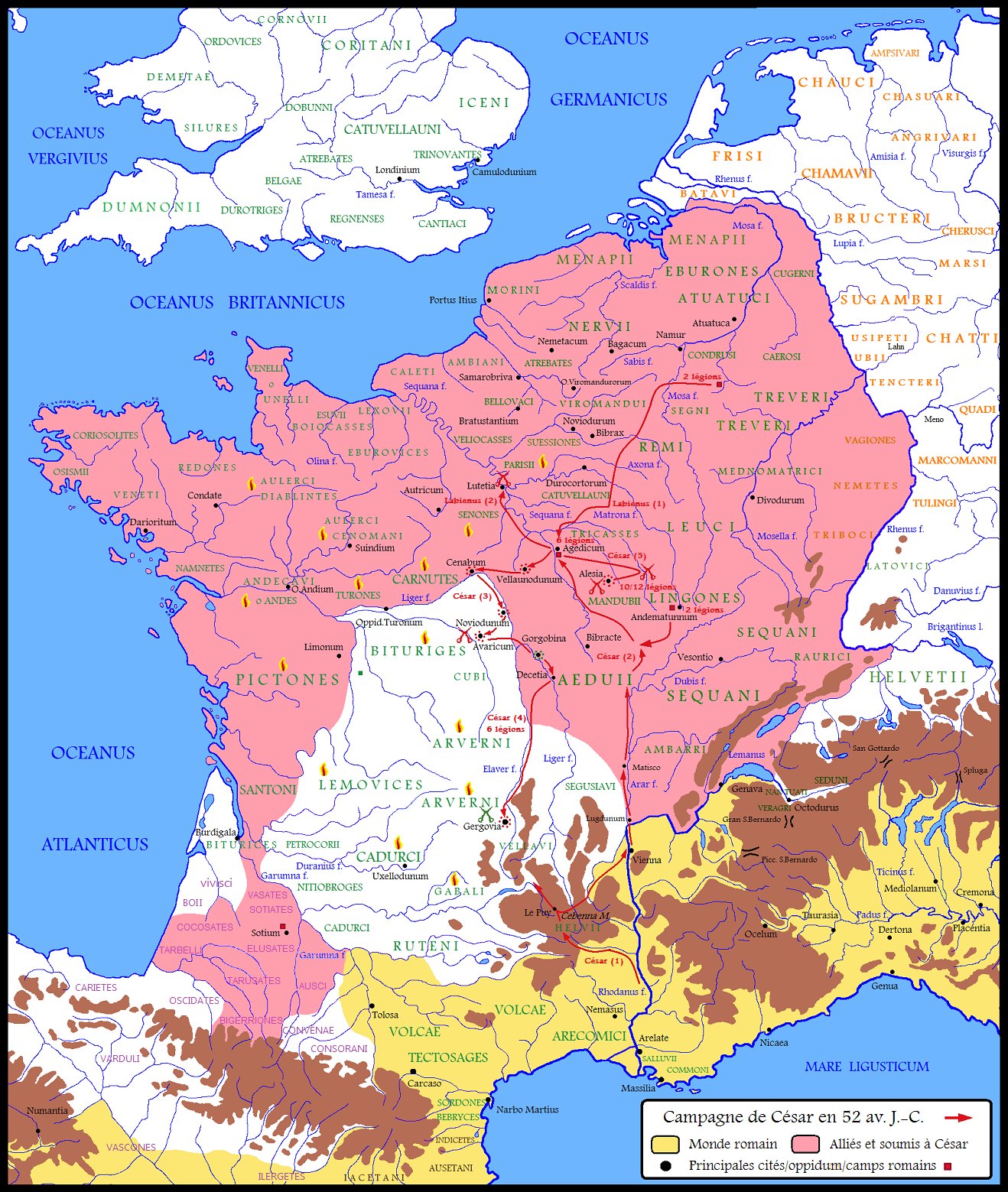Battle Of Lutetia on:
[Wikipedia]
[Google]
[Amazon]
The Battle of Lutetia was a battle on the plain of Grenelle in what is now 
Paris
Paris () is the Capital city, capital and List of communes in France with over 20,000 inhabitants, largest city of France. With an estimated population of 2,048,472 residents in January 2025 in an area of more than , Paris is the List of ci ...
between Roman forces under Titus Labienus
Titus Labienus (17 March 45 BC) was a high-ranking military officer in the late Roman Republic. He served as tribune of the Plebs in 63 BC. Although mostly remembered as one of Julius Caesar's best lieutenants in Gaul and mentioned frequently ...
and an anti-Roman Gallic coalition in 52 BC during the Gallic Wars
The Gallic Wars were waged between 58 and 50 BC by the Roman general Julius Caesar against the peoples of Gaul (present-day France, Belgium, and Switzerland). Gauls, Gallic, Germanic peoples, Germanic, and Celtic Britons, Brittonic trib ...
. It was a Roman victory.

Prelude
Caesar sent Labienus to campaign against the peoples of theSeine
The Seine ( , ) is a river in northern France. Its drainage basin is in the Paris Basin (a geological relative lowland) covering most of northern France. It rises at Source-Seine, northwest of Dijon in northeastern France in the Langres plat ...
, whilst Caesar himself marched on Gergovia
Gergovia was a Gaulish town in modern Auvergne-Rhône-Alpes in the upper part of the basin of the Allier, near present-day Clermont-Ferrand. It was the capital of the Averni. The city of Gergovia had strong walls and was located on a giant raise ...
. He captured the oppidum of ''Metlosedum'' (possibly present-day Melun), and crossed the Seine to attack the Gallic coalition near Lutetia
Lutetia, ( , ; ) also known as and ( ; ; ), was a Gallo-Roman culture, Gallo–Roman town and the predecessor of modern-day Paris. Traces of an earlier Neolithic settlement () have been found nearby, and a larger settlement was established ...
. Threatened by the Bellovaci (a powerful Belgae
The Belgae ( , ) were a large confederation of tribes living in northern Gaul, between the English Channel, the west bank of the Rhine, and the northern bank of the river Seine, from at least the third century BC. They were discussed in depth b ...
tribe), he decided to re-cross the Seine to rejoin Caesar's force at Agedincum (Sens). Feinting a general retreat, Labienus in fact crossed the river. The Gauls of the Seine coalition tried to block his path to Caesar and battle was joined.
Battle
After the two sides engaged the Seventh legion, placed on the right wing, started to push back the Gallic left. On the Roman left the Twelfth legion'spilum
The ''pilum'' (; : ''pila'') was a javelin commonly used by the Roman army in ancient times. It was generally about long overall, consisting of an iron shank about in diameter and long with a pyramidal head, attached to a wooden shaft by eith ...
volleys broke up the Gauls first charge, but they resisted the Romans advance, encouraged by their old chieftain Camulogenus. The turning point came when the military tribune
A military tribune () was an officer of the Roman army who ranked below the legate and above the centurion. Young men of Equestrian rank often served as military tribunes as a stepping stone to the Senate. The should not be confused with the ...
s of the Seventh legion led their legionaries against the enemy rear. The Gauls sent in their reserves, taking a nearby hill, but were unable to reverse the course of the battle and took flight. Their losses increased when the Roman cavalry was sent to pursue them. Labienus's force thus advanced back to Agedincum, recaptured their baggage train along the way.
Aftermath
The Gauls tried to prevent Labienus from returning to Agedincum by blocking him at theSequana
In Gallo-Roman religion, Sequana is the goddess of the river Seine, particularly the Spring (hydrology), springs at the Source-Seine#Geography, source of the Seine. Although the origins of the goddess are Celtic, Sequana was subsequently integrate ...
river. Labienus used five cohorts to lure the Gauls away while he himself crossed the Sequana River with three legions. When the Gauls found out there were two Roman armies in the area they split up and pursued both. The main body met Labienus who pinned them down with one legion while surrounding them with the rest. He then annihilated their reinforcements with his cavalry.Julius Caesar, ''Commentarii de Bello Gallico'', VII, 62. After linking up with the five cohorts he had used as a diversion, Labienus marched his army back to Agendicum where he met up with Caesar returning from his defeat at Gergovia. The combined Roman army would soon after march from Agendicum to face Vercingetorix's victorious army coming from the south. After defeating the Gauls in the Battle of the Vingeanne near the river of Vingeanne, Caesar pursued them to Alesia where he won a decisive victory over Vercingetorix.
Notes and References
Lutetia
Lutetia, ( , ; ) also known as and ( ; ; ), was a Gallo-Roman culture, Gallo–Roman town and the predecessor of modern-day Paris. Traces of an earlier Neolithic settlement () have been found nearby, and a larger settlement was established ...
Lutetia
Lutetia, ( , ; ) also known as and ( ; ; ), was a Gallo-Roman culture, Gallo–Roman town and the predecessor of modern-day Paris. Traces of an earlier Neolithic settlement () have been found nearby, and a larger settlement was established ...
History of Paris